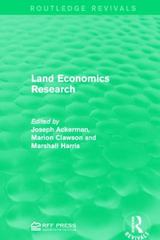Hello tutors, here is another practice problem missing solutions. Would be great if you could list out the steps to see if I did it correctly or where I may have made a mistake. I have included plenty of lecture notes and 3 example poroblems, Thank you!
Sidebar: Calculating Min AVC . Step (i): set AVC = MC, and solve for q . this is the quantity, q, that minimizes AVC . Step (ii) sub the q from Step (ii) into AVC (or equivalently, by their equality, into MC) . this is the minimum value (across all quantities) of the AVC E Intermediate Micro: Lecture 13 October 20, 2020 13 / 26 Sidebar: Derivation of Min AVC Calculation . the q that minimizes AVC solves the FOC: 0 = AVC'(q) = d VC(q) dq q qVC'(q) - VC(q) = 0 92 qMC - VC = 0 = MC = VC = AVC q o i.e., it is the quantity where MC = AVC o note for 3rd line: MC = C'(q) = VC'(q), since C(q) = VC(q) +fixed costsSummary: SR Supply w/ Perfect Competition So in practice, to find each firm's supply curve in a perfectly competitive setting, . first, make sure that marginal costs are increasing in quantity (if not, you need to look at corner solutions!) o if yes, then make sure p 2 min, AVC; if not, the firm should shut down . to get ming AVC, set AVC = MC, solve for q, and evaluate AVC at this q . if yes, then the firm should produce where p = MC o this is sometimes described as: "the SR supply curve is the part of the MC curve above AVC" Intermediate Micro: Lecture 13 October 20, 2020 15 / 26 SR Supply in a Picture (Blue) AC MC AVCExample A firm has fixed costs F = 1, and variable costs VC(q) = q2 if it produces q units of output. The firm is a price-taker, and can sell as much as it wants at the market price p. Find the firm's SR supply curve, and profits. Intermediate Micro: Lecture 13 October 20, 2020 17 / 26 Solution to Example o we know that the supply curve is given by p = MC (this is the FOC from Step 1), so long as two conditions are satisfied: . (1) operating in the SR beats shutdown, i.e. p 2 ming AVC(q) . (2) and the SOC: MC is increasing in q. let's check condition (1) first: we know AVC is minimized where MC = AVC; here, recalling VC(q) = q2, MC = 2q, and AVC = = q q so MC = AVC = 2q = q= q=0 - min AVC = [AVC]go = 0 so, this firm will produce as long as the market price is nonnegative (i.e. always) Intermediate Micro: Lecture 13 October 20, 2020 19 / 26 . next, let's check condition (2): we have MC = 2q, which is increasing in q (you can either eyeball this or take a derivative and make sure dMC / dq > 0), so we're good also on condition (2)Solution to Example, Cont'd 0 thus, conditions (1) and (2) are both satisfied for all prices p Z 0 0 so the SR supply curve is simply p = MC; here MC = 2q, so we get the SR supply curve P :2 = o the first arrangement p = 2q is the SR inverse supply curve, and tells us that in order to want to sell q units of output, the firm must get $2q per unit 0 the second arrangement q = g is the 5R supply curve, and tells us that if the market price is p, the firm will produce g units of the good El 5' ' _= 2: QQC' October 20. 2020 21 f 26 o for example, if you were told that the market price was p = 5 and ask . . . . . 5 _ . to fund the fIrm s supply, It IS E 2.5 units 0 total profits for the firm (just evaluate the profit expression at the optimal supply quantity q 2 J53): rc
+ =p()()2-1=%-1 total costs C (q) q= Example from Goolsbee, Levitt, Syverson (p.316) In 2008 in Texas, a power supply company can produce electricity as follows using its 3 plants: . plant A: coal generator produces energy at $18/MWh up to 200 MW, co thereafter . plant B: natural gas generator produces energy at $37/MWH up to 25 MW capacity . plant C: natural gas generator produces at $39/MWh up to 25 MW capacity Find the SR supply curve. Intermediate Micro: Lecture 13 October 20, 2020 23 / 26 SR Supply Curve . the MC is the (assuming efficient behavior) cost per MWh 18 if q 250 o min AVC = 18SR Supply Curve so the SR supply curve is simply the MC curve. at prices p 2 18 if p














